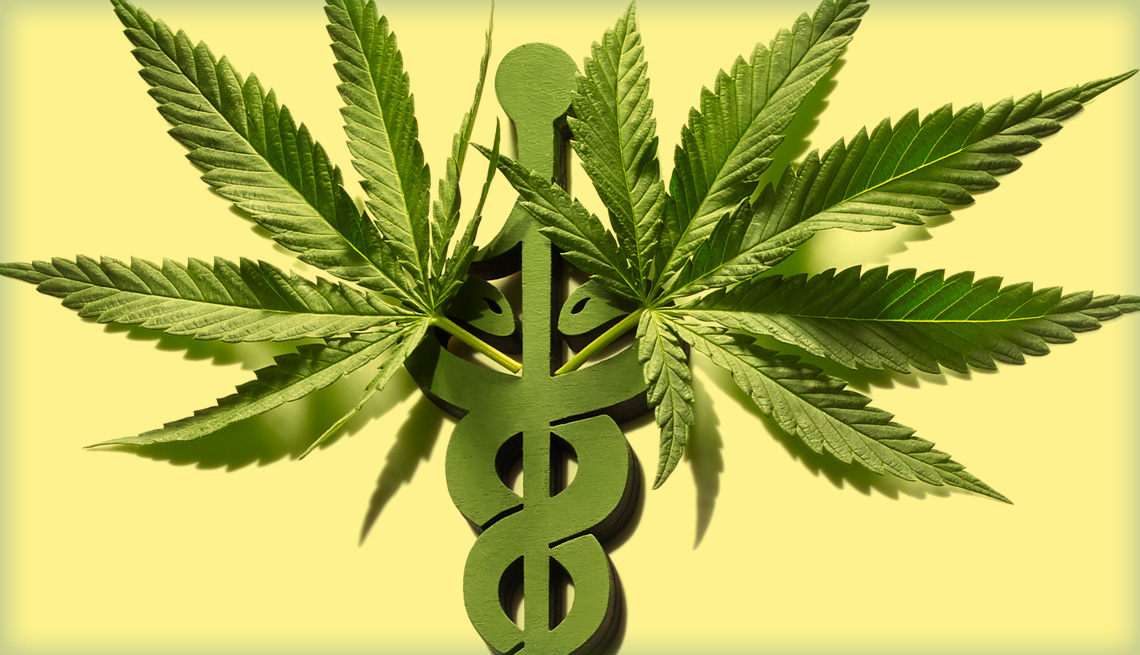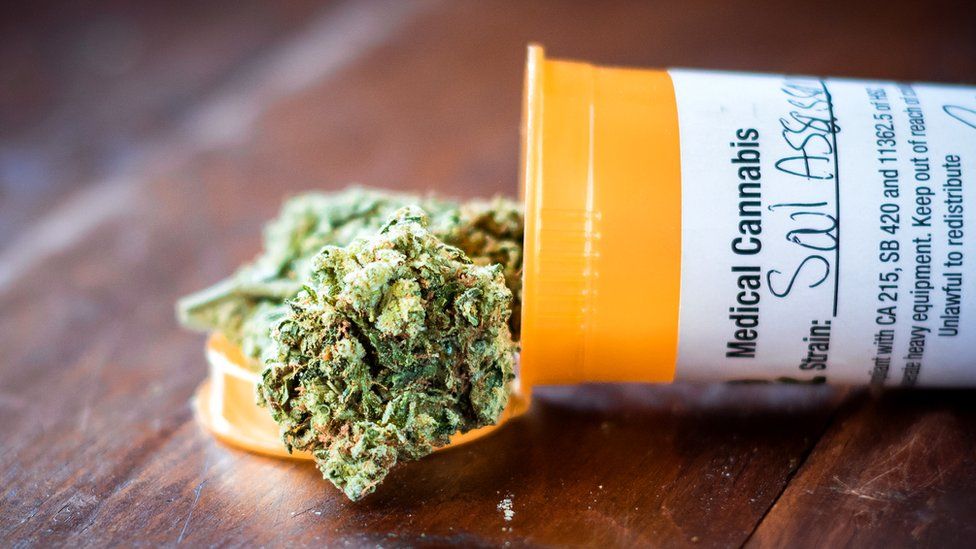Research Based, Potential Medicinal Uses of THC
Medical Uses for Cannabis

The most common use for medical marijuana in the United States is for pain control. While marijuana isn’t strong enough for severe pain (for example, post-surgical pain or a broken bone), it is quite effective for the chronic pain that plagues millions of Americans, especially as they age. Part of its allure is that it is clearly safer than opiates (it is impossible to overdose on and far less addictive) and it can take the place of NSAIDs such as Advil or Aleve, if people can’t take them due to problems with their kidneys or ulcers or GERD.
In particular, marijuana appears to ease the pain of multiple sclerosis, and nerve pain in general. This is an area where few other options exist, and those that do, such as Neurontin, Lyrica, or opiates are highly sedating. Patients claim that marijuana allows them to resume their previous activities without feeling completely out of it and disengaged.
Along these lines, marijuana is said to be a fantastic muscle relaxant, and people swear by its ability to lessen tremors in Parkinson’s disease. I have also heard of its use quite successfully for fibromyalgia, endometriosis, interstitial cystitis, and most other conditions where the final common pathway is chronic pain.
Marijuana is also used to manage nausea and weight loss and can be used to treat glaucoma. A highly promising area of research is its use for PTSD in veterans who are returning from combat zones. Many veterans and their therapists report drastic improvement and clamor for more studies, and for a loosening of governmental restrictions on its study. Medical marijuana is also reported to help patients suffering from pain and wasting syndrome associated with HIV, as well as irritable bowel syndrome and Crohn’s disease.
This is not intended to be an inclusive list, but rather to give a brief survey of the types of conditions for which medical marijuana can provide relief. As with all remedies, claims of effectiveness should be critically evaluated and treated with caution.
Peter Grinspoon, M. D. (2020). Medical marijuana. Harvard Health. Retrieved from https://www.health.harvard.edu/blog/medical-marijuana-2018011513085. Harvard Health Publishing.
List of other potential cannabis uses:

- Slows Cancer Cell Growth-Research shows that cannabidoil (CBD) works to slow and even stop cancer cells from spreading by turning off specific genes central to the growth of cancerous tumors.
- Treats Glaucoma-Smoking marijuana decreases pressure in the eye, relieving the increased eye pressure associated with Glaucoma.
- Helps with Hepatitis C Treatment– Marijuana users were way more likely to complete their Hepatitis C treatment (86%) compared to their non-marijuana using counterparts (29%).
- Improves Epileptic Seizures-Research from New York University shows that seizure suffers who were resistant to pharmaceuticals responded positively to cannabidiol.
- Reduces PTSD Symptomalogy– Preliminary research shows that marijuana improves several PTSD-related symptoms including flashbacks, poor sleep, and agitation.
- Asthma-Based on a study that looked at asthma suffers over 20 years, moderate marijuana smoking actually improved asthma sufferers’ pulmonary functioning.
- Anxiety Reduction-Marijuana use has been shown to decrease levels of anxiety, according to a Harvard study.
- Relieves Arthritis Symptoms– Arthritis sufferers reported pain reduction and improved sleep using a cannabinoid-based medication.***
The Potential Benefits of Medical Marijuana | Dr. Alan Shackelford | TEDxCincinnati
Introductory Library Resources
Cannabinoids and the Brain by
Call Number: Online Resource (Ebook Central University Press)ISBN: 0262035790Publication Date: 2017A review of the scientific evidence on the effects of cannabinoids on brain and behavioral functioning, with an emphasis on potential therapeutic use. The cannabis plant has been used for recreational and medicinal purposes for more than 4,000 years, but the scientific investigation into its effects has only recently yielded useful results. In this book, Linda Parker offers a review of the scientific evidence on the effects of cannabinoids on brain and behavioral functioning, with an emphasis on potential therapeutic uses. Parker describes the discovery of tetrahydocannbinol (THC), the main psychoactive component of cannabis, and the further discovery of cannabinoid receptors in the brain. She explains that the brain produces chemicals similar to THC, which act on the same receptors as THC, and shows that the endocannabinoid system is involved in all aspects of brain functioning. Parker reports that cannabis contains not only the psychoactive compound THC, but also other compounds of potential therapeutic benefit, and that one of them, cannabidiol (CBD), shows promise for the treatment of pain, anxiety, and epilepsy. Parker reviews the evidence on cannabinoids and anxiety, depression, mood, sleep, schizophrenia, learning and memory, addiction, sex, appetite and obesity, chemotherapy-induced nausea, epilepsy, and such neurodegenerative disorders as multiple sclerosis and Alzheimer's Disease. Each chapter also links the scientific evidence to historical and anecdotal reports of the medicinal use of cannabis. As debate about the medical use of marijuana continues, Parker's balanced and objective review of the fundamental science and potential therapeutic effects of cannabis is especially timely.Recent Advances in Cannabinoid Research by
Call Number: Online Resource (Open Access Books)ISBN: 1838801510Publication Date: 2019Scientific interest in cannabinoid research is currently experiencing a significant increase because of changing attitudes toward Cannabis and the evolving awareness of its pharmaceutical benefits. Coincidently, numerous jurisdictions are moving toward legalizing Cannabis and Cannabis-derived products, which reflects a larger global movement to understand Cannabis and its bioactive chemicals for their potential biomedical uses, harms, and economic value. Research activities are surging to fill important knowledge gaps in the field of cannabinoids as they continue to be identified. The purpose of this book is to summarize some leading areas of research in the cannabinoid field where knowledge gaps are actively being addressed. The research described herein spans basic biological and clinical research.Medical Marijuana by
Call Number: RM666.C266 M432 2012ISBN: 0737760567Publication Date: 2012The legality of medical marijuana continues to provoke controversy and face challenges. This book addresses the various facets of the debate, including whether medical marijuana should be legal, and if medical marijuana is good for society. Readers will explore how access to medical marijuana should be managed, and the legal rights of patients using medical marijuana, in terms of such issues as driving, gun rights, and employment.The Science of Marijuana by
Call Number: Online Resource (Oxford University Press)ISBN: 9780195328240Publication Date: 2007In The Science of Marijuana Leslie Iversen explains the remarkable advances that have been made in scientific research on cannabis with the discovery of specific receptors and the existence of naturally occurring cannabis-like substances in the brain. Dr. Iversen provides an objective and up-to-date assessment of the scientific basis for the medical use of cannabis and what risks this may entail. The recreational use of the drug and how it affects users is described along with some predictions about how attitudes to cannabis may change in the future.Medical Marijuana by
Call Number: Online Resource (Gale Virtual Reference Library)ISBN: 9780737762976Publication Date: 2013-Medical marijuana is a popular topic for debate. This volume covers the contentious nature of medical marijuana. Readers will evaluate the medicinal nature of it, teenage use, and federal regulation of medical marijuana. Colorful photographs, charts, graphs, tables and editorial images reinforce text and present more data, that is excellent for research and report writing.Fast Facts about Medical Cannabis and Opioids by
Call Number: Online Resource (CREDOreference Academic Core)ISBN: 9780826142993Publication Date: 2020Helps nurses to provide the best and safest care for patients suffering from chronic pain This is the first book to discuss the use of medical cannabis in helping combat the opioid crisis, relieving pain, and reversing opioid addiction rates. With the information presented in short chapters with bulleted content, this concise resource delivers all the information health care professionals need to know about non-cancer-related chronic pain, the opioid crisis, and medical cannabis. Using the most up-to-date evidence available, it examines the varied causes of chronic pain and provides a succinct overview of how cannabis can be integrated into treatment plans. Fast Facts about Medical Cannabis and Opioids delves into the epidemiology behind chronic pain, what the endocannabinoid system is, and how it works. It examines the complex interactions of opiates, cannabinoids, and the central nervous system and to answer key questions about different types of medical cannabis to promote open, honest conversations. Above all, this handbook seeks to provide you with the tools to provide unbiased, accurate information to share with patients.Key Features: Delivers a comprehensive overview of the opioid crisis in the U.S and the benefits and drawbacks of medical cannabis as an alternative or supplement to opioidsDiscusses dos and don'ts of recommending medical cannabis to patientsProvides the most up-to-date information on cannabis legislationCovers the endocannabinoid system and its biologyCompares the of use opioids and/or medical cannabis for managing chronic painPresents key information in short chapters, bulleted content, and figures plus "Fast Facts" boxes that highlight key content
Comprehensive Bibliography of THC Resources Made Available By MAPS
- Bibliography of THC Research (MAPS)Provides a comprehensive list of research articles regarding psilocybin as a therapeutic, current research, new experiments, etc.
